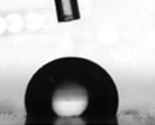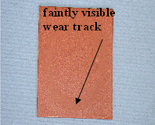Aerospace
Ultrafine Aluminum Powder for Propellant Applications
Overview
Ultrafine aluminum powder (UFAP) is commonly used in a wide variety of applications like rocket propellant additives, thermite mixtures, paints and hydrogen generation, etc due to its reduced ignition delay and temperature thus leading to complete combustion of particles. Though UFAP can be synthesized by a number of techniques, radio frequency induction plasma (RFIP) offers inherent advantages over other techniques. The purity of the powder is ensured since RFIP setup has no electrodes. The productivity is also reasonably high ~0.5-1 kg/hr, depending upon the material and its feed rate. The precursor powder carried by a carrier gas passes through the injection probe and gets delivered into the plasma chamber. The vaporized precursor is then subjected to a drastic quench as it comes out of plasma chamber.
Key Features
- Ultra fine Al increases burning rates; required for solid or liquid propellant
- Import embargo
- ARCI has got capability to make Al nano powder in kg levels
- Ability to tailor the particle size and its distribution
- Metallic aluminium content as high as 90%
- Predominantly displays an exothermic peak compared to micron sized Al powder
Potential Applications
- Propellant additives for both solid as well as liquid propellants
- Sintering additives
- Coating applications
- Thermite welding applications
- Hydrogen generation
Intellectual Property Development Indices (IPDI) 
- Synthesis of powder at kg levels was demonstrated
- One kg of powder delivered to SF Complex, Jagdalpur, DRDO for field trials
| Status | 1 | 2 | 3 | 4 | 5 | 6 | 7 | 8 | 9 | 10 |
Major Patents / Publications
Major Patents
Major Publications
- P.Sai Karthik, S.B. Chandrasekhar, D. Chakravarty, PVV Sriniuvas, VSK. Chakravadhanula, TN Rao, Propellant grade ultrafine aluminium by RF induction plasma, Advanced Powder Technoilogy, 29, 804-12, 2018
Sintered silicon carbide (SiC) components
Overview
Silicon carbide (SiC) is one of the most attractive ceramic materials because of its excellent mechanical properties such as high strength, moderate toughness, and high wear and oxidation resistance, and strength retention at elevated temperature. ARCI has the expertise to manufacture SiC parts with various size and shapes by pressureless sintering using solid-state or liquid phase sintering additives and also by hot pressing technique. SiC parts of complex geometry can also be manufactured through machining at the green stage using 5-axis CNC machine. Dimensional accuracy can also be achieved on sintered SiC parts by final shaping with the help of sophisticated ultrasonic machining.
Key Features
- Tuneable density and other thermo-mechanical properties.
- Flexibility in producing SiC parts incorporating solid-state or liquid phase sintering additives.
- Capable to produce SiC components up to 750 mm diameter.
- SiC parts with critical can be manufactured.
Potential Applications
- Mechanical seals particularly for corrosive environment.
- Impact and abrasion resistance parts.
- Light-weight structural parts for aerospace applications.
- Impact and wear resistant parts.
Intellectual Property Development Indices (IPDI) 
- The technology has been validated for production of various size and shape SiC parts by pressureless sintering and available for technology transfer.
| Status | 1 | 2 | 3 | 4 | 5 | 6 | 7 | 8 | 9 | 10 |
Major Patents / Publications
Major Patents
Major Publications
- P. Barick, D. C. Jana and B.P. Saha, Load-dependent indentation behaviour of βSiAlON and αSilicon carbide, Journal of Advanced Ceramics, 2, (2013), 185192.
- S. V. A. Raj, D. C. Jana, P. Barick and B. P. Saha, Microstructure Evolution in Densification of SiC Ceramics by Aluminium Vapour Infiltration and Investigation of Mechanical Properties, Ceram. Inter., 44 (2018), 9221-9226
- D. C. Jana, P. Barick and B. P. Saha, Effect of Sintering Temperature on Density and Mechanical Properties of Solid-State Sintered Silicon Carbide Ceramics and Evaluation of Failure Origin, J. Mater. Eng. Perform., 27 (2018), 2960-2966.
- D. C. Jana, G. Sundararajan and K. Chattopadhyay, Effective activation energy for the solid-state sintering of silicon carbide ceramics, Met. Mater. Trans. A, Vol 49 A (2018), 5599-5606.
Nanocomposites electrode for hybrid supercapacitor with quick-burst energy release
Overview
For last few decades, the rapid growth in the manufacturing sector for sustainable global economy has increased the demand for energy consumption. The energy generation is mainly relying on conventional energy sources. The depletion of fossil fuels, global warming and environmental-friendly energy sources prompted the development of efficient energy storage and conversion technologies. Now a day, ultracapacitors, a category of energy storage appliance which can bridge the gap between conventional capacitor and electrochemical batteries are widely studied to serve as one of the promising candidate for next generation energy storage devices owing to their exceptional characteristics like high power density, fast charge/discharge process and long cycle life. Among all, nanocarbon materials (carbon nanotubes, graphene, carbon sphere etc) are extremely explored as electrode material due to their intriguing thermal, electrical, mechanical and chemical properties. Our technology demonstrates the development of high performance nanoelectrode for hybrid supercapcitor based on nanoscaled-carbon integrated with electroactive oxide/sulphide and conducting polymers.
Key Features
- Facile synthesis of nanoscaled-carbon with surface modification
- Activated porous graphene with tailored pore size distribution
- Shape-tailored metal oxide/sulphide with controllable surface area
- Hybridizing nanocarbon with oxide/sulphide or conducting polymer
- High power density with moderate energy density and multifunctionality
- All-solid-state supercapacitor
- Scalable preparation process
Potential Applications
- Aerospace
- Defence
- Automobiles
- Power grid system
- Consumer electronics
- Tools
Intellectual Property Development Indices (IPDI) 
- Nanocomposites for electrode preparation are fabricated
- A prototype all-solid-state supercapacitor is developed
- Development of multifunctional supercapacitor is underway
| Status | 1 | 2 | 3 | 4 | 5 | 6 | 7 | 8 | 9 | 10 |
Oxide Dispersion Strengthened Iron aluminides for High Temperature Applications
Overview
Iron aluminides(Fe 3 Al) are potential candidates for high temperature applications due to its light weight, low cost and attractive properties such as high strength, resistance to oxidation, sulfidation and corrosion. However, poor ductility, inadequate creep resistance and low fracture toughness limit their commercial applications. Ductility and strength of Fe 3 Al are significantly improved not only at room temperature but also at high temperatures (up to 700C) by incorporating fine grain structure and stable nano-sized complex oxide dispersoids (Y-Ti-O and Y-Al-O) in Fe 3 Al matrix. The material (ODS Fe 3 Al) exhibited good oxidation resistance up to 1150C. The creep fatigue interaction studies indicated that ODS-Fe3Al can be used as turbine blades up to 550 and as furnace crucibles up to 1150C. Long term creep properties are being evaluated.
Key Features
- High operating temperature of 650-700C
- Light weight
- Exhibits yield strength of 1090 MPa and elongation of 16% at RT
- Exhibits yield strength of 165 MPa and elongation of 56% at 700C
- Potential candidates to replace nickel based super alloys
- Excellent oxidation and corrosion resistance
Potential Applications
- Blades for ultra super critical steam turbines
- High pressure compressor and low pressure turbine blades of gas turbines
- Other high temperature applications like furnace crucibles and plates
Intellectual Property Development Indices (IPDI) 
- Basic concepts and understanding of underlying scientific principles
- Short listing possible applications
- Research to prove technical feasibility for targeted application
- Coupon level testing in stimulated conditions
| Status | 1 | 2 | 3 | 4 | 5 | 6 | 7 | 8 | 9 | 10 |
Major Patents / Publications
Major Patents
Major Publications
Air stable, hydrocarbon fuel dispersible nano boron powder
Overview
Key Features
- Average particle size of nano boron is 200-300 nm
- Purity of the boron > 95%
- Surface area of the powder > 10.5 m2/g
- Dispersable in hydrocarbon fuel
- Handling of the powders is not difficult
- Capability to produce in large quantities.
Potential Applications
- Slurry fuels for propellant applications
- Alloys and Composites
Technology Readiness Level (TRL):
- Synthesized and characterized tha nano boron at laboratory
- Testing of the nano boron at industry is underway
Intellectual Property Development Indices (IPDI) 
- Basic concepts and understanding of underlying scientific principles
- Short listing possible applications
- Research to prove technical feasibility for targeted application
- Coupon level testing in stimulated conditions
- Check repeatability/ consistency at coupon level
| Status | 1 | 2 | 3 | 4 | 5 | 6 | 7 | 8 | 9 | 10 |
Major Patents / Publications
Major Patents
- Process for producing the nano boron by cryo milling,” * S.Sudhakara sarma, R.Vijay, T.N.Rao, Indian patent no;391804, granted date;11/03/2022
- S.Sudhakara Sarma, Joudip Joardar, R.Vijay, T.N.Rao, “preparation and characterization of nano boron by cryo milling” * Advanced Powder Technology, Vol 31, 2020, P 3824-3832.
Major Publications
Laser Hybrid Welding of Nickel based super alloys
Overview
Research to increase the efficiency of conventional fossil power plants by increasing the steam temperature and pressure has been pursued worldwide. The need to reduce CO2 emission has recently provided an additional incentive to increase efficiency. The main enabling technology in achieving the above goals has been the development of stronger high temperature materials. Solid solution and carbide strengthened Nickel based super alloys have been identified as candidate materials for Advanced ultra-supercritical (AUSC) boilers capable of operating with 760oC, 35Mpa steam. Laser hybrid welding is one of the potential fusion joining techniques developed for these alloys. Deep penetration capability of laser and edge bridgability of arc process enables processing of defect free joints at higher speed with acceptable mechanical properties. Laser hybrid welding process is AMSE coded and validated process.
Key Features
- Demonstrated laser hybrid weldability of 10mm thick Plates and Tubes at coupon level.
- Defect free hybrid welds with minimal HAZ liquation.
- 100% joint efficiency.
Potential Applications
- Power sector
- Aerospace
- Nuclear
Intellectual Property Development Indices (IPDI) 
- Performance and stability are validated at coupon level
| Status | 1 | 2 | 3 | 4 | 5 | 6 | 7 | 8 | 9 | 10 |
Laser Welding of Titanium alloy Ti-6Al-4V
Overview
Due to high reactivity of titanium, especially at elevated temperatures, it reacts strongly with most atmospheric elements like, oxygen, hydrogen, nitrogen, etc. and gets embrittled readily. Hence, elaborate shielding arrangements are required while welding and often electron beam welding is preferred as it is done in vacuum. Laser Welding with simple and effective shielding arrangement has been proven to be techno-commercially feasible joining technique as compared to Electron Beam Welding.
Key Features
- Localised inert gas shielding set up.
- Welded joint made with square and lip joint configuration on 4mm thick sheets with 100% joint efficiency.
Potential Applications
- Aerospace •
- Chemical industry
- Medical industry
Intellectual Property Development Indices (IPDI) 
- Performance and stability are validated at coupon level
| Status | 1 | 2 | 3 | 4 | 5 | 6 | 7 | 8 | 9 | 10 |
Abrasion Resistant, Hydrophobic Coatings on Carbon-Epoxy Composites (CEC)
Overview
Carbon epoxy composites (CEC) have excellent advantages such as lightweight, high strength and weathering resistance when compared to aluminum alloys and high-grade steels. Moreover, body parts made of CEC when used for aerospace applications can be tailor-made with limited number of joints. But CEC are poor in abrasion and erosion resistance and degrade when contacted with hydraulic fluids such as water or any oil. Sol-gel formulations developed by ARCI when deposited on CEC were found to substantially improve scratch/abrasion resistance. Transparent or coloured abrasion resistant, hydrophobic coatings on polyurethane painted carbon-epoxy composite coupons could be generated using UV polymerizable silanes and their performance was found to be promising for aerospace applications. The developed coating technology was found to be amenable for scale-up and automation.
Key Features
- Eco-friendly
- Durability of hydrophobicity and abrasion resistance
- Amenable to coat large areas with easy automation
- Good adhesion to the substrate materials
- Can be applied as bond coat to promote adhesion with paints
- Can be made as coloured coatings
Potential Applications
- Automobile components
- Aerospace components
- Communication gadgets
Intellectual Property Development Indices (IPDI) 
- Performance and stability validated at laboratory scale
| Status | 1 | 2 | 3 | 4 | 5 | 6 | 7 | 8 | 9 | 10 |
Major Patents / Publications
Major Patents
- An improved abrasion resistant and hydrophobic composition for coating plastic surfaces and a process for its preparation, Indian Patent application number 1278/ DEL/ 2011 dtd 02-05-11




















